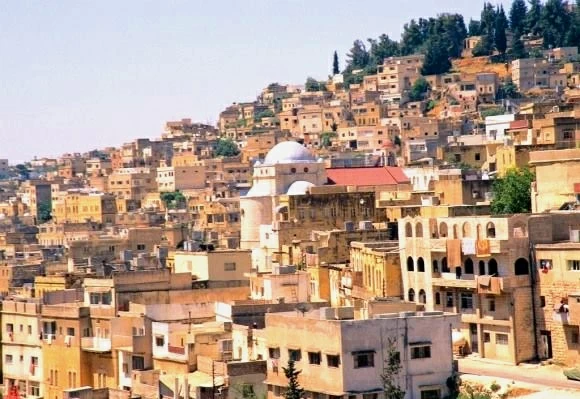As-Salt
Until the early 1920s as-Salt was the only town of any real significance in Jordan. Thanks to its good water supply and agricultural land, it had been settled at least since the Iron Age. It has been identified with Roman Gadaron; and in the Byzantine period it had its own bishop its name (Latin: saltus means wooded valley) is said to be the origin of the word ‘sultana’, from the famed sweetness of the local grapes.






